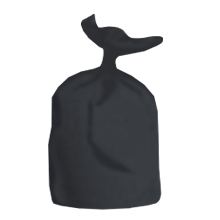Work at height takes place in a variety of work activities, including construction, maintenance, cleaning... Safe access, safe working platforms and suitable edge protection are normally required. This includes permanent edge protection and temporary scaffolding for certain types of work. Work at height is defined as work in any place, including a place at or below ground level where, if measures were not taken a person could fall a distance liable to cause personal injury.
Apply for a scaffolding permit (online application form)
Work at height - basic concepts
- Employers and those in control of work at height must first assess the risks.
- Before working at height you must follow these simple steps:
- avoid work at height where it is reasonably practicable to do so
- where work at height cannot be easily avoided, prevent falls using either an existing place of work that is already safe or the right type of equipment
- minimise the distance and consequences of a fall, by using the right type of equipment where the risk cannot be eliminated
- You should:
- do as much work as possible from the ground
- ensure workers can get safely to and from where they work at height
- ensure equipment is suitable, stable and strong enough for the job, maintained and checked regularly
- not overload or overreach when working at height
- take precautions when working on or near fragile surfaces
- provide protection from falling objects
- consider emergency evacuation and rescue procedures
Protecting the public during scaffolding operations
- The general public will not be aware of the hazards associated with scaffolding activities making them more vulnerable to the possibility of injury, during erection, use, alteration, maintenance and dismantling of scaffold structures. In areas where the public normally have access:
- You must take measures to provide complete protection of the public when the scaffold is erected or dismantled, and when it is in use.
- Where possible, work should be undertaken at times that reduce contact with the public.
- Warning signs/barriers should be in place at each end of the structure to warn the public that works are in progress above.
- Public access to the scaffold should, so far as is practicable, be made difficult by providing hoardings and/or sheeting and by removing or preventing the use of access ladders at the lower level.
- Highlight all standards and braces on the footpath in conspicuous colours to a minimum height of 6'6" (2 metres), i.e., painted white, covered in red/white tape, or sleeved in yellow foam.
- A minimum width of 1.2 metres unobstructed footway should be maintained. Where there is insufficient footway width, A safe walkway must be provided through the scaffold with minimum clear headroom of 2.4 Metres. If it is not practical to provide a safe route through the scaffold structure an alternative route must be provided around the structure to provide a safe passage.
- Ensure the planning and design also takes into account those with disabilities, including blindness, and does not include any additional risks to the disabled.
- The use of brickguards, sheeting and netting on scaffolds does not provide protection from falling objects during scaffolding operations as they are erected after scaffolding is erected and removed prior to dismantling scaffolding, therefore exclusion zones should be prioritised and combined with further control measures including tool tethering and a dropped object prevention policy as appropriate.
- Where the public cannot be excluded, effective physical protection should be provided to prevent persons being struck by falling tools or materials.
- No rubble, waste, rubbish or unsecured tool is to be left upon an unattended scaffolding, neither is the scaffold to be used for the storage of loose or unsecured builder's materials.
- Once the scaffold structure has been inspected and handed over to the client. It is the legal duty of the Client (e.g. Principal Contractor, Contractor, Hirer, User) to ensure that the scaffold structure is used and maintained in a safe manner, including ensuring the prevention of unauthorised, access modifications and overloading.
- See:SG34:17 Guidance on Protection of the Public for further information.
Organisation and planning
- All work at height has some inherent risk, therefore all workers must be trained to the extent necessary for them to be competent to work safely.
- Employers must ensure work at height is properly planned, appropriately supervised and carried out in a manner which is so far as is reasonably practicable safe.
Competence and Training
- All workers must be trained to the extent necessary for them to be competent to work at height safely, given the access equipment in use and the hazards they may be exposed to.
Avoidance of risks from work at height
- Whenever possible sites should be designed to allow maintenance to be performed without workers being exposed to fall risks.
- For example, by placing equipment away from edges, use of long-life components etc.
- Working at height in any form should be the last resort.
Selection of work equipment for work at height
- Every employer, in selecting work equipment for use in work at height, should give collective protection measures priority over personal protection measures and take account of:
- (i)the working conditions and the risks to the safety of persons at the place where the work equipment is to be used.
- (ii)in the case of work equipment for access and egress, the distance to be negotiated.
- (iii)the distance and consequences of a potential fall.
- (iv)the duration and frequency of use.
- (v)the need for easy and timely evacuation and rescue in an emergency.
- (vi)any additional risk posed by the use, installation or removal of that work equipment or by evacuation and rescue from it.
- Employers must select work equipment for work at height which has characteristics including dimensions which are appropriate to the nature of the work to be performed and the foreseeable loadings and allow passage without risk.
Prevent access to fragile surfaces
- You must avoid access onto a fragile surface unless absolutely necessary and if it must happen you must minimise the distance and consequences of a fall this is particularly important given that falls though fragile surfaces are one of the most common causes of death and injury whilst working at height.
Preventing risk from falling objects
- In addition to the risk of a worker falling you must ensure that objects cannot fall and injure people, or damage property.
- The general public must be protected where they have right of access to surrounding streets or may be in a building underneath fragile surfaces and or skylights.
- The requirement to protect people is absolute if you cannot do it the work must not be carried out.
Mark danger areas
- Any location where there is a risk of a person falling or being struck by a falling object should be clearly indicated by warning signs and wherever possible access should be prevented to unauthorised persons.
Inspection and maintenance of work equipment
- All personal protective equipment should be inspected by competent people.
- Access equipment such also requires inspection and maintenance.
Scaffold, Street decorations, Temporary structure and hoarding
- Scaffolding standards
- Scaffold erected in Guernsey and Alderney must comply with the relevant British Standard BS EN 12811-1:2003.
- In practice, the construction, erection and design must comply with the recognised industry technical guidance.NASC - National Access & Scaffolding Confederation
- Scaffolders must be competent to undertake the work. They can demonstrate their competence through the UK CISRS or Channel Islands STARS schemes. The competence schemes provide a card to demonstrate they have achieved a basic, standard or advanced level.
- All scaffolders must work safely and in accordance with NASC-SG4-22.pdf.This includes wearing and using fall arrest (harness and lanyard) systems, or using advanced guardrails / step systems.
Permit Applications for Scaffolds, Street decorations, Temporary structures and Hoarding
- There is a fee to apply for scaffold, street decoration, temporary structure and hoarding permits.
Fees for licences and permits 2023 [153kb]
- You must obtain a permit for any of the above erected on or over a footpath, road or verge interacting with a public highway. A public highway includes any road, street, lane or public place.
- Public place means any place to which the public or a substantial group of the public has access and includes, but is not limited to, streets, highways, and the common areas of schools, hospitals, apartment houses, office buildings, transport facilities, piers, slipways and shops.).
- Note. Whilst Terres Mises a l'Amende signifies a private parking area the land is still considered a public place when public or a substantial group of the public has access eg common areas of schools, hospitals, apartment houses, office buildings, transport facilities, and shops.
- The Health and Safety Executive (HSE) will consider the application under the terms of the Public Highways Ordinance, 1967.
- Permits granted under the terms of the ordinance will often require specific safety features to ensure that the general public are not put at risk. This includes the erection, dismantling and the intended use of the scaffold, street decoration, temporary structure or hoarding. Application therefore, must be made in advance of the date anticipated for the building of the scaffold, street decoration, temporary structures or hoarding.
- It is necessary to obtain the consent of the Traffic and Highways Services or (in the case of the Harbour areas of St Peter Port and St Sampson, of Guernsey Harbours), before scaffold, street decoration, temporary structure or hoarding is erected.
- Paper Scaffold Application
Paper Scaffold application [293kb]
- Digital Scaffold Application Digital Scaffold Application
- Street decoration application form.
Street decoration application [218kb]
- Temporary structure application form
Temporary structure application [218kb]
- Hoarding permit application form
Hoarding Application Form [216kb]
- Where it is necessary to close a footpath, authority from Traffic and Highway Services will be required in a similar way to when a carriageway is closed. Roadworks Information including application for temporary road traffic management.
- If the scaffold impinges on the highway works must be safely and clearly signed, guarded and lit in accordance with the Safety at Street Works and Road Works Code of Practice. Contact Traffic and Highway Services on Tel: 221000 or Email traffic@gov.gg for further information.
Ladders and stepladders
- Ladders and stepladders are not banned under health and safety law
- In fact they can be a sensible and practical option for low-risk, short-duration tasks, although they may not automatically be your first choice.
- Make sure you use the right type of ladder and you know how to use it safely.
- Safe use of ladders
- Maintain three points of contact when climbing (this means a hand and two feet) and wherever possible at the work position. However, where you cannot maintain a handhold, other than for a brief period (eg to hold a nail while starting to knock it in, starting a screw etc), you will need to take other measures to prevent a fall or reduce the consequences if one happened
- Make sure the ladder angle is at 75° - you should use the 1 in 4 rule (i.e. 1 unit out for every 4 units up)
- You should secure the ladder (eg by tying the ladder to prevent it from slipping either outwards or sideways) and have a strong upper resting point, i.e. do not rest a ladder against weak upper surfaces (eg glazing or plastic gutters). Securing devices are also available. Footing for stability should be a last resort.
- Safe use of stepladders
- Check all four stepladder feet are in contact with the ground and the steps are level
- Don't stand and work on the top three steps (including a step forming the very top of the stepladder) unless there is a suitable handhold
- Ensure any locking devices are engaged
- Maintain three points of contact at the working position. This means two feet and one hand, or when both hands need to be free for a brief period, two feet and the body supported by the stepladder
Common work at height myths
- HSE have banned the use of ladders on building sites
- No, this isn't the case. Ladders and stepladders can be a sensible and practical option. They can be used for work at height when the use of other work equipment is not justified because of the low risk and short duration (short duration means working on a ladder for no more than 30 minutes at a time); or when there are existing workplace or site features which cannot be altered.
- You need to be formally 'qualified' before using a ladder at work
- No, you do not. You need to be competent. This means having the necessary skills, knowledge and experience to use a ladder properly for the work you will carry out, or, if you are being trained, you work under the supervision of somebody who can perform the task competently. Training often takes place on the job and does not always have to take place in a classroom. What matters is that an individual can apply what they have learned in the workplace.
- I am working at height if I'm walking up and down a staircase at work
- No, you are not. Work at height does not include walking up and down a permanent staircase in a building.
- You need to have two feet and one hand on a stepladder at all times when carrying out a task
- No, this isn't true. When you need to have both hands free for a brief period to do a job using a stepladder (eg putting a box on a shelf, hanging wallpaper, installing a smoke detector on a ceiling) you need to maintain three points of contact at the working position. This is not just two feet and one hand, it can be two feet and your body (use your knees or chest to help with stability) supported by the stepladder. Ensure a handhold is available to steady yourself before and after.
- HSE has banned the use of ladders to access scaffolds and you will be fined if you ignore this ban
- No, this isn't true. Ladders can be used for access as long as they are of the right type (i.e. a suitable grade of industrial ladder), in good condition and effectively secured (tied) to prevent movement. You should ensure they extend at least one metre above the landing point to allow for a secure handhold when stepping off.
Scaffold Inspection
- Scaffolds must be inspected before they are used and confirmed in the initial inspection report or in a handover certificate.
- Scaffolds must be inspected every 7 days.
- Scaffolds must be inspected following events which could affect the safety of the structure, e.g. alterations, adverse weather or an earthquake.
- Inspection reports must be kept in a format which can be reproduced in a printable form and is secure from loss or unauthorised interference.
- The person carrying out an inspection should prepare a report before the end of the working period within which the inspection is completed and this must be shared with the client / employer within 24 hours.
- An employer receiving a report should keep it at the site where the inspection was carried out until the construction work is completed and then at their office for 3 months.
- Protection may be removed but only for the time and to the extent necessary to gain access for the performance of a particular task and shall be replaced as soon as practicable. The task must not be performed unless effective compensatory safety measures are in place.
Inspection Report
- The scaffold inspection report should note any defects or matters that could give rise to a risk to health and safety and any corrective actions taken, even when those actions are taken promptly, as this assists with the identification of any recurring problem.
- All scaffolding inspection should be carried out by a competent person whose combination of knowledge, training and experience is appropriate for the type and complexity of the scaffold. Competence may have been assessed under the CISRS or an individual may have received training in inspecting a specific type of system scaffold from a manufacturer/supplier.
- A non-scaffolder who has attended a scaffold inspection course (eg a site manager) could be deemed competent to inspect a basic scaffold structure.
- An inspection report should include the following:
- The name and position of the person making the report.
- Details of any further action considered necessary.
- Details of any action taken as a result of any matter identified.
- Details of any matter identified that could give rise to a risk to the health or safety of any person.
- The date and time of the inspection.
- A description of the scaffold.
- The location of the inspection.
- The name and address of the person for whom the inspection was carried out.
- Example inspection report.
Scaffold Inspection Record [168kb]
Scaff Tags and Handover Certificate
- Tagging a scaffold as safe to use is best practice although it is not a legal requirement. Although the opposite is true if a scaffold is incomplete or unsafe to use where you must tag the structure as unsafe. It is also necessary to physically prevent access.
- Whilst there is no statutory requirement for a scaffold contractor to issue a handover certificate, clients may, in their own interest, require that the scaffold contractor does issue one. Once the scaffold contractor has completed the erection of a scaffold and it has been inspected by a competent person, it is recommended that the scaffold contractor issues a handover certificate to their client. This will advise the client that, at the time of the handover, the scaffold had been built to their specification, had been left in a condition suitable to perform the duty for which it was intended and it complied with the requirements of statutory regulations and any local authority requirements, was structurally sound and in a condition that was safe for use.
- Handover Certificates should refer to any relevant drawings, intended and actual loadings on scaffolds, permitted working platform loadings and any specific restrictions on its use. It also demonstrates that the client has accepted that the scaffold is fit for purpose and has acknowledged their responsibility to inspect and maintain the scaffold, and to follow any loading limitations and any restrictions for its use etc.
- The handover certificate can also be considered the first inspection of the scaffold.
- Ideally the handover inspection should be conducted by a representative of the scaffolding company with a representative from the contractor/client; after all they will be responsible for the scaffold. It is also acceptable to email the certificate to the client.
- In the Health and Safety at Work (General) (Guernsey) Ordinance, 1987. General duties of employers and self-employed to persons other than their employees. 2. (1) It shall be the duty of every employer to conduct his undertaking in such a way as to ensure, so far as is reasonably practicable, that persons not in his employment who may be affected thereby are not thereby exposed to risks to their health or safety. Inspection reports and handover certificates can demonstrate scaffold contractors compliance with this duty.
- Example handover certificate
Scaffold Handover Certificate [176kb]
Scaffold Design
- Strength and stability calculations for scaffolding should be carried out unless it is assembled in conformity with a generally recognised standard configuration (TG20:21)
- Essentially any scaffold where Tube & Fittings have been used and a TG20:21 compliance sheet cannot fully cover all aspects of the scaffold, should be designed.
- See CG6-20 Scaffolding design
- Scaffold structures that normally require bespoke design
- Include:
- all shoring scaffolds (dead, raking, flying)
- cantilevered scaffolds 1
- truss-out scaffolds
- façade retention
- access scaffolds with more than the 2 working lifts2
- buttressed free-standing scaffolds
- temporary roofs and temporary buildings
- support scaffolds
- complex loading bays 1
- mobile and static towers 1
- free standing scaffolds 1
- temporary ramps and elevated roadways
- staircases and fire escapes (unless covered by manufacturers instructions)
- spectator terraces and seating stands
- bridge scaffolds 1
- towers requiring guys or ground anchors
- offshore scaffolds
- pedestrian footbridges or walkways
- slung and suspended scaffolds
- protection fans 1
- pavement gantries
- marine scaffolds
- boiler scaffolds
- power line crossings
- lifting gantries and towers
- steeple scaffolds
- radial / splayed scaffolds on contoured facades
- system scaffolds outside manufacturers' guidance
- sign board supports
- sealing end structures such as temporary screens
- temporary storage on site
- masts, lighting towers and transmission towers
- advertising hoardings/banners
- rubbish chute
- any scaffold structure not mentioned above that falls outside the 'compliant scaffold' criteria in TG20 or similar guidance from manufacturers of system scaffolds.
- The above list is not exhaustive and any scaffold that is not a standard configuration or does not comply with published manufacturers' guidelines will require a specific design produced by a competent person.
- Note:
- 1: TG20:21 provides compliant scaffolds for a limited range of cantilever scaffolds, loading bays, static towers, mobile towers, use of rakers, bridges and protection fans.
- 2: TG20:21 provides a range of compliant scaffolds, which can be boarded at any number of lifts, but only two platforms can be used as working platforms at any one time.
- Scaffold design calculations should include:
- A thorough assessment of loading conditions and combinations of the scaffold.
- A check of the capacities of every single scaffold component to support the loads/combinations of loads involved.
- An assessment of the scaffold's rigidity and stability, ensuring adequate safety factors are included.
- Identification of the loads the scaffold will hold. This is an absolute necessity in proving whether the scaffold itself is adequate, the structure relies upon the safe transmittal of loads, so it is essential to undertake a substantiation process for all supporting and adjacent structures.
Guidance on employing a scaffolding contractor
- Under The Guernsey Construction (Design & Management) ACoP 2020, principal contractors and contractors have an important role in managing health and safety risks during the construction phase. Among their duties, they are required to check that anyone they appoint has the skills, knowledge, experience and, where relevant, the organisational capability to carry out their work safely and without risk to health.
Scaffold Design, Calculations and Risk Assessment / Method Statement (RAMS)
- Once the principal contractor / contractor has selected a scaffolding contractor, it is important that the scaffolding is erected to either a recognised configuration (e.g. to a TG20 compliance sheet or for system scaffold, erected to the manufacturer's user manual), or to a specific design with calculations. The scaffold should also be erected, modified, and dismantled to a Safe System of Work.
- All relevant documentation should be communicated to the scaffolding operatives and kept on site.
Scaffolding Inspections and Handovers
- The hirer / user of the scaffold has a legal duty to ensure the scaffold is inspected when it is first erected, significantly modified and also weekly. Once the scaffold has been completed, it should be inspected and handed over in good order, together with any required paperwork such as:
- Scaffold design drawings with calculations and / or TG20 compliance sheets, and/or system scaffolding user manual.
- Tie testing reports etc
- Guernsey Legislation:
- The Safety of Employees (Miscellaneous Provisions) Ordinance, 1952 * http://www.guernseylegalresources.gg/article/91511/Health-and-safety
- UK Legislation:
- The Management of Health and Safety at Work Regulations 1999 The Management of Health and Safety at Work Regulations 1999 (legislation.gov.uk)
- The Work at Height Regulations 2005 The Work at Height Regulations 2005 (legislation.gov.uk)
- Approved Codes of Practice and other Guidance:
- SG39:21 Guidance on Appointing a Scaffolding Contractor
SG39:21 Guidance on Appointing a Scaffolding Contractor [381kb]
- The Guernsey Construction (Design & Management) ACoP 2020 CHttpHandler.ashx (gov.gg)













